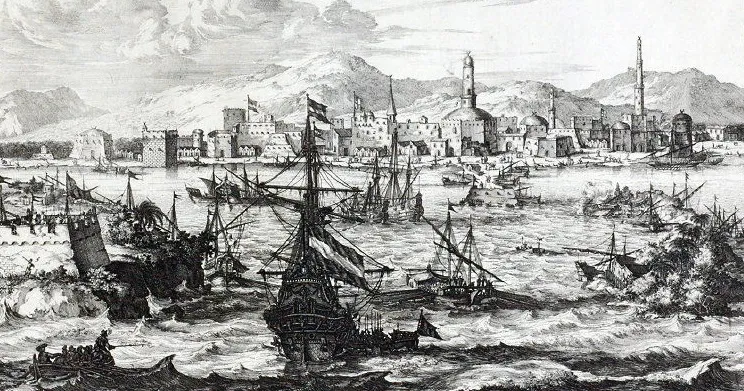Your Mocha is Named After the Birthplace of the Coffee Trade
The port city of Mocha, in Yemen, was once a vast coffee marketplace
:focal(461x237:462x238)/https://tf-cmsv2-smithsonianmag-media.s3.amazonaws.com/filer/b5/94/b5942caf-8c09-40c2-842e-c52f99f9344f/mocha.jpg)
Your coffee shop order has a history that stretches back thousands of years–it’s the name of a coastal city in Yemen that was once a coffee hub.
Mocha is a port city on Yemen’s south western coast that borders the Red Sea. It has been associated with coffee since its founding in the 1300s, according to Encyclopedia Britannica, but the heyday of its trade with Europe came during the founding of a European coffee culture in the 1700s.
The city “was long famous as Arabia’s chief coffee-exporting centre,” writes the encyclopedia. “Coffee was everything for Yemen,” businessman Sheikh Shabbir Ezzi told Hyacinth Mascarenhas writing for Mic. “It’s a gift from our ancestors. You can see how important coffee was for Yemen from the emblem of the country," which depicts an eagle holding a scroll with "The Yemeni Republic" written on it in Arabic. The eagle's chest is a shield depicting none other than a coffee plant.
The coffee plant can only be grown at high elevations such as the highlands surrounding Mocha, she writes, making the port city an important point of export. “Locals gave it the Arabic name qahwa, the word from which coffee and cafe are derived, “ Mascarenhas writes.
Coffee as a beverage was developed sometime around the 1400s. “At first the Arab Sufi monks adopted coffee as a drink that would allow them to stay awake for midnight prayers more easily,” writes author Mark Pendergrast. “While coffee was first considered a medicine or religious aid, it soon enough slipped into everyday use.”
As anyone who has ever reached with shaking hand for their first morning cuppa can attest to, there’s a reason why the drink spread quickly from there. After the Ottoman Turks occupied Yemen in 1436, coffee's popularity spread with the empire. And, writes Pendergrast, by the end of the fifteenth century, Muslim pilgrims introduced coffee throughout the Islamic world. “The beans generally were exported from the Yemeni port of Mocha, so the coffee from that region took on the name of the port,“ Pendergrast writes. The city grew and flourished.

One of the places it reached was, eventually, Europe–where it took a while to catch on, due to its expense. But by the latter half of the 1600s, Europeans had caught the coffee bug. It was during this period that mocha got its first association with another expensive imported substance–chocolate, writes Macarenhas. Tasting the dark, aromatic coffee that came out of Mocha, Europeans connected it with the taste of cocoa.
“As in the Middle East, the coffee house became a place for men to talk, read, share their opinions on the issues of the day and play games,” writes John McHugo for the BBC.
Although coffee shops are still a common meeting-place throughout the world, the city of Mocha is no longer the coffee hub of the globe. However, Yemeni coffee is again on the upswing, writes Nikki Ekstein for Bloomberg Pursuits. “The hard-to-find, chocolatey beans that hail from Mokha, Yemen,” are now being imported to the U.S., she writes.